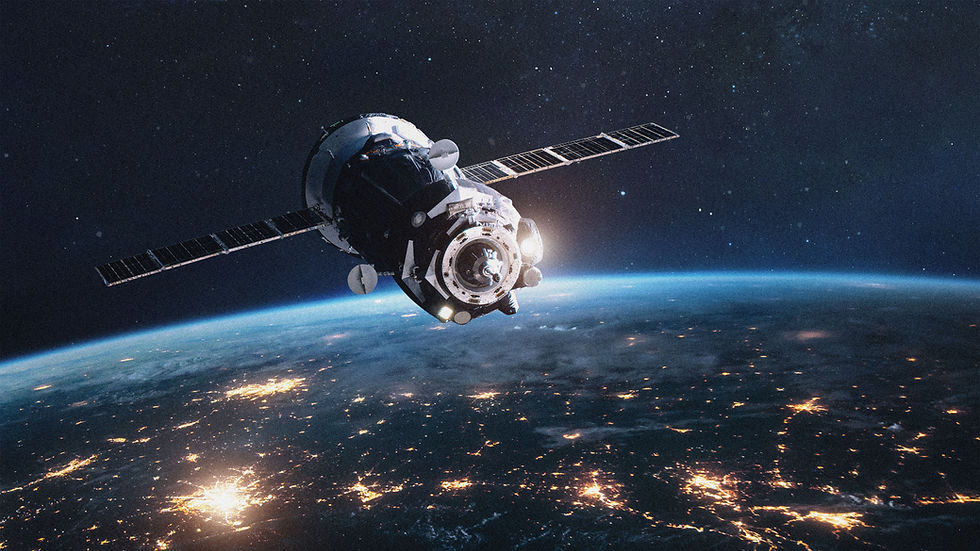The Future of Space Sustainability
- Amanda Grodman

- Feb 1, 2023
- 3 min read
Updated: Jun 2, 2023
Rapid population growth, as seen in the past two hundred years, has enabled revolutionary developments, from technology to science, to occur. However, this growth also yields concerns of food availability, living space, and disease implications. Although migrating to space to avoid these problems may seem far-fetched, contemporary developments and progressions of space colonization beg several questions of extraplanetary survival. Mars and other planets, should they be able to support vital human resources, may be a gradual alternative to living on Earth, as proposed by NASA, SpaceX, and other aerospace corporations. While discovering if these planets are habitable is the first step to expanding the idea of space colonization, hypothesizing methods of sustainable and neutrally-impactful approaches to living in space must also take priority–even if they seem out-of-this-world.

Sustainable living in space takes into account nourishment sources, material transport (for habitable construction), and primarily, methods of waste disposal, among other factors. Recently, a series of experiments sought to find alternatives to growing plants in space, using artificial materials (i.e. soil) to yield fresh lettuce and beans. Others suggest the use of microbes in consuming human waste, from carbon dioxide to urine, to generate proteins and lipids which can then be efficiently recycled. Astronauts aboard the ISS have experienced unfavorable psychological impacts due to fresh food depletion, as noted by researchers on Earth, and this issue will only prolong should there be no sustainable alternatives on a foreign planet. From here, the question of waste disposal comes into question. That of the ISS is released from the vehicle and eventually burns up in the atmosphere–although novel methods look to recycle waste for necessities rather than the mass disposal of waste. In addition, living on Mars will require the use of sturdy materials for habitation, where researchers have proposed the use of chitin as a substantial source. Chitin can be seen in fungi and insect cell walls, which provides both structure and protein (and therefore may be used as a nutritional alternative as well). Through these debates, one must consider the estimated time a Mars trip will take (up to three years) and the complementary food and waste production.

In recent years, artificial orbital debris, originating from abandoned spacecraft and related material, has drastically increased. These items not only threaten spacecraft and other vehicles because of their speed, but also show the widening footprint that humans have diffused throughout space. Tracking orbital debris is difficult due to the speeds in which materials move, although notable space corporations–inclusive of companies aiming to send humans to Mars–must keep in mind the need to prevent further debris from perfusing. These issues bring into concern the concept of colonizing Mars as the increased traffic between planets will inevitably impact the atmosphere–whether it be on Earth or elsewhere. Though technology’s horizons are greatly expanding, engineers and scientists must take into consideration the practicality of sending humans to space given both the resources needed and waste produced–and contemporary vermiculture research aims to address this.

In this episode of “Let’s Go to Space: BLUESKY Learning,” Episode 93: Worming Her Way Into Space, we’re joined with Annalyn Connor, an undergraduate Aerospace and Physics student at the University of Central Florida. She is currently involved in experiments at the Exolith Lab, which aim to quantify sustainable agriculture practices by utilizing earthworm-soil interactions. Per Annalyn, red wiggler worms are promising for our future in space–exhibiting a remarkable ability in breaking down secretion and food scraps, which might otherwise be spatial waste. Truly, the future of sustainable extraplanetary survival lies in the interdisciplinary nature of aerospace. Learn more about Annalyn Connor or visit our other weekly podcasts to hear from other speakers, by clicking the link above. Also make sure to check out our website to learn more about becoming a member of the Aerospace and Innovation Academy, where you can join us in our quest to go to space.




Comentários